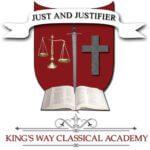Who was St. Anselm? Some call Anselm (1033-1109) the father of revealed theology. Of Italian parentage, he began his career as a Benedictine monk. Later he became Archbishop of Canterbury in England, as a result of the Norman invasion. He was a leader in the struggle for church freedom from the state. Anselm was noted for his humility. When asked at age forty why a contemporary was more widely known than he, Anselm replied, “Perhaps, because any flower may imitate the colour of the rose without possessing its scent.” A number of miracles have been tied to Anselm. For example, when he crossed the Channel from France to become Archbishop of Canterbury the boat had a hole through which no water entered. Another time a house caught fire next door to Anselm’s home. He was urged to make the sign of the cross in the face of the fire to prevent its spreading. He did, with the desired effect. We cannot, of course, confirm the truth of these stories. But they show the respect in which Anselm was held.
Historical context. Anselm ministered during great political and social turmoil. Looming over all was the Norman conquest of Britain in the decisive Battle of Hastings (1066). The Norman invasion was prompted by a dubious claim to the English throne by William of Normandy over the popular Harold II. Harold had been elected king at the death of Edward the Confessor.
The first Crusade followed within 30 years (1096), resulting in the loss of many feudal leaders to battle. This created social conditions favorable to the Papal Revolution. This erupted in 1075 against lay investiture. The defining event was the struggle between Pope Hildebrand and Henry IV of Germany, the Holy Roman Emperor. In a heated exchange, Hildebrand pressed hard to eliminate Simony. Simony was the sale of church offices by the magistrate (cf. Acts 8:18). When Henry resisted, Hildebrand excommunicated him. This was a blow to his authority in Germany. Henry stood three days barefoot in the snow outside the Pope’s castle at Canossa. Finally, the Pope was compelled to pardon him (1077). Thus, Henry was restored and Hildebrand died in apparent defeat. Even so, most of his ideas about separation of church and state won out over the next 50 years. Men like Anselm picked up the baton.
Sadly, his teaching on celibacy of the clergy also prevailed.
Shortly after the Canossa incident, somebody chanced to find the Justinian Code in an Italian library. This event marked the rapid growth of scholasticism and the Western legal tradition. Anselm himself is regarded by some as the father of the Scholastic movement. Scholasticism was an intellectual movement of the later medieval period (about 1050 to 1450). It sought to ratify Revelation by means of reason and Aristotle
Summary of St. Anselm’s teaching. Over against Aquinas’ natural theology, Anselm lifted up revealed theology. St. Anselm seconded Augustine with the words, “I believe in order that I may understand.” Although this seems clear enough, scholars are divided in their view of Anselm. The majority holds that Anselm believed in reason applied in the context of commitment to God’s Word. In this context he worked out his famous ontological argument for the existence of God (Proslogion, 1078). He also posed an argument for the logical necessity of the incarnation (Cur Deus Homo). The ontological argument asserts first that the idea for a supreme being exists in the mind of man. It follows that such a supreme being must therefore exist. This is called an argument by definition.
Others assert that Anselm held his position inconsistently. They say he diluted his famous maxim with Greek autonomy. This was also the case with Augustine and most of the Christian apologists before Anselm. For instance, his Monologium (1077) asserted “in order that nothing in Scripture should be urged upon the authority of Scripture itself, but that whatever the conclusion of independent investigation should declare to be true….” “Apparently Anselm meant that the doctrines of the Bible … could be demonstrated apart from Scripture on independent grounds” (9).
Implications for subsequent history. The defense of the faith (apologetics), must be governed by rules from the Bible. Anselm was not the first Christian leader to use a mixed apologetic. Nor was he the last. But he was one of the best known. Thus, he shows the extent to which the church has been burdened by the corrupting influence of Greek epistemology.
Biblical analysis. “Thou shalt not tempt [test] the Lord thy God”, said Jesus (Matt. 4:7). All efforts of the natural man to judge God or His Word are forbidden. Thus, Anselm was correct to insist that faith is exercised first on the basis of Revelation. Afterward it is shown to be in accord with and supported by reason. There are many who believe that Anselm’s seeming compromises are not compromises at all. Rather they are rational expressions
of a mind renewed by faith. In this view his use of logic is the exercise of a newborn faith seeking to take stock of itself. It is faith expressing itself in the truth it can now perceive. But, it is still hard to explain some of Anselm’s more radical statements noted above. Thus, we observe that even the ablest defenders of the faith found it difficult to escape the lure of Hellenistic epistemology. They try to ground truth on reason apart from the Bible.
Corrective or prescriptive actions. Regrettably, where two streams converge the dirty will always pollute the clean. Thus, we must practice Anselm’s dictum untainted by Greek rationalism. Avoid the tendency to validate God’s Word by external evidence or reason.


